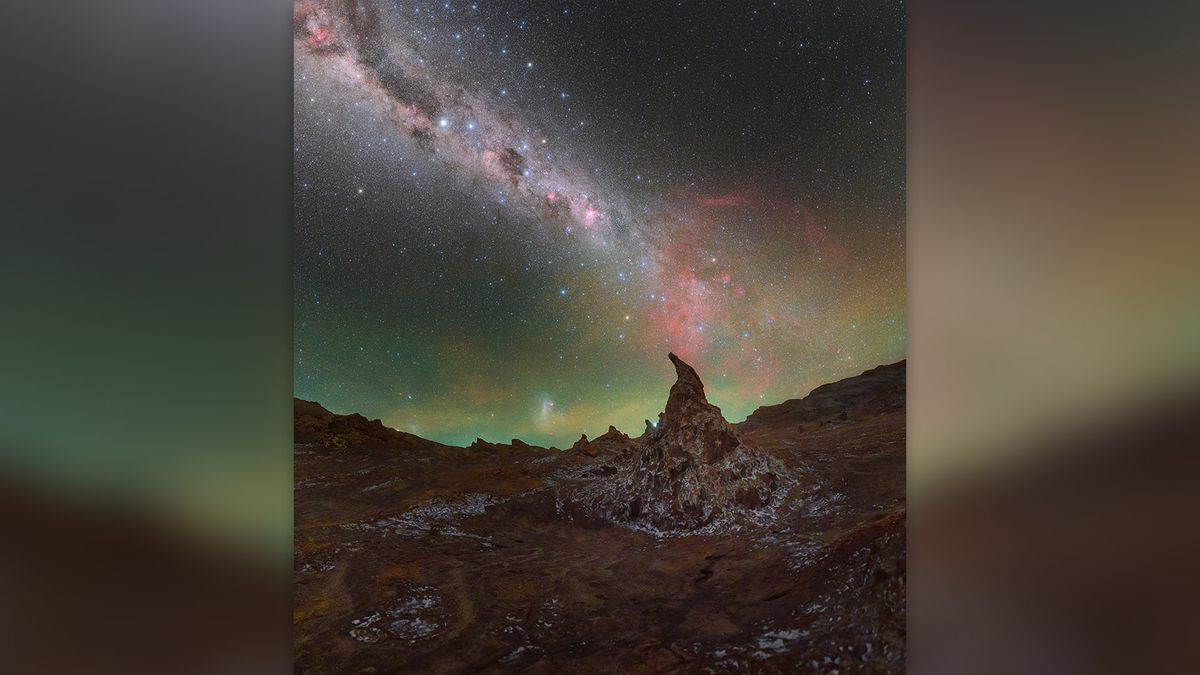What it is: The Milky Way over Valle de la Luna (Valley of the Moon)
Where it is: The Atacama Desert, in Chile
Why it’s so special: Astronomy has long been conducted mainly from mountaintops and other high-altitude locations, far above Earth’s hot, dense air and far from light pollution. It doesn’t get much higher than the Atacama Desert in Chile, which, at an elevation of around 7,900 feet (2,400 meters), is the perfect place for astronomy. It’s home to the Atacama Large Millimeter/submillimeter Array (ALMA), a collection of radio telescope antennas for observing molecular gas and dust in the cosmos.
However, as astrophotographer Petr Horálek discovered when on assignment for the European Southern Observatory (ESO), one of the partners in the international collaboration that runs ALMA, there’s much more to the Atacama Desert than its suitability for observations.
The foreground of the “magical” image, published by ESO on Nov. 27, shows strange geological formations poking out of the Valle de la Luna (Valley of the Moon), an ethereal ecosystem in the Atacama Desert full of time-carved stone structures and white-capped salt lakes.
The “wizard’s hat” rock formation in this skillfully composed image leads the eye to the Milky Way, which takes on a pinkish tinge. That color reveals hydrogen atoms distributed throughout our galaxy. These hydrogen atoms show up in night-sky images only if the photographer uses hydrogen-alpha (H-alpha) filters, which transmit one specific wavelength of light.
You can access a zoomable version of the photo and options to download all kinds of resolutions up to a massive 148-megapixel raw file on the ESO’s website, linked just above.
How to visit: Valle de la Luna is located 8 miles (13 kilometers) west of San Pedro de Atacama, in La Cordillera de la Sal (“Salt Mountains”) in northern Chile. It’s a popular tourist attraction and on the itinerary of most organized tours to the region.

Dr. Thomas Hughes is a UK-based scientist and science communicator who makes complex topics accessible to readers. His articles explore breakthroughs in various scientific disciplines, from space exploration to cutting-edge research.








